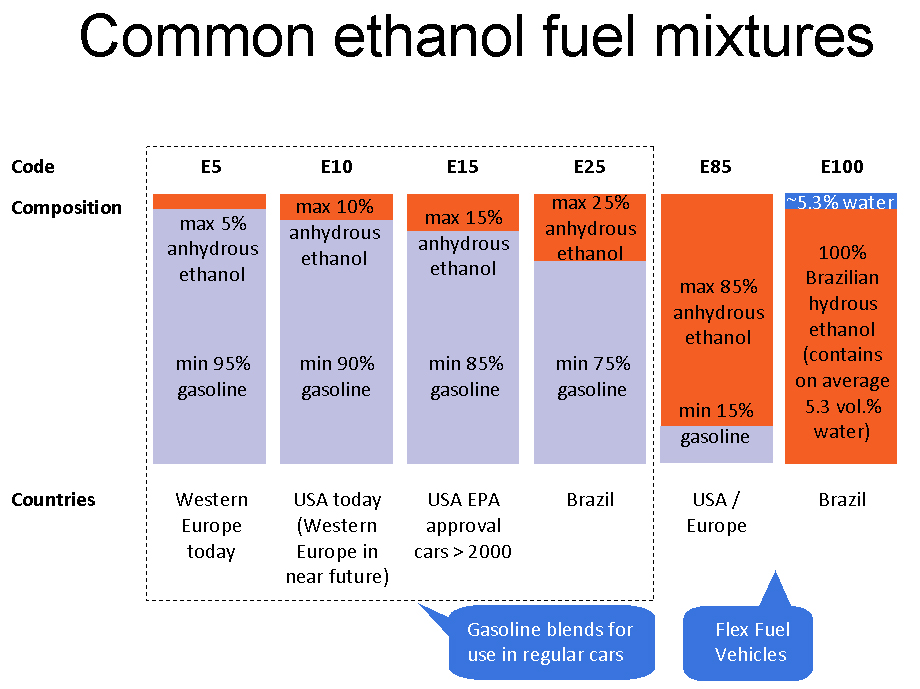After refusing to back down from its corn ethanol blending targets, the U.S. Environmental Protection Agency last week made a major concession—agreeing to defer its 2013 target by four months, from February 28, 2014 to June 30, 2014, while hinting that it may be forced to reduce its overall 2014 target as well.
The agency’s final 2013 overall volumes and standards require 16.55 billion gallons of renewable fuels to be blended into the U.S. fuel supply (a 9.74 percent blend). This standard specifically requires:
- Biomass-based diesel (1.28 billion gallons; 1.13 percent);
- Advanced biofuels (2.75 billion gallons; 1.62 percent);
- and Cellulosic biofuels (6.00 million gallons; 0.004 percent).
“These standards reflect EPA’s updated production projections, which are informed by extensive engagement with industry and a thorough assessment of the biofuels market,” the agency said in an official statement.

Opposition to E15
The EPA first approved E15 —gasoline mixed with 15 percent ethanol—as a registered fuel in April 2012. For more than 30 years, ethanol had been blended into gasoline, but the law limited it to 10 percent by volume for use in gasoline-fueled vehicles.
The agency’s decision allowed fuel and fuel additive manufacturers to sell gasoline that contained greater than 10 volume percent ethanol but no more than 15 volume percent ethanol (E15) for use in model year (MY) 2001 through 2006 light-duty motor vehicles (passenger cars, light-duty trucks, and medium-duty passenger vehicles).
However, the regulators got immediate pushback from both automakers—including Toyota, Nissan and BMW—and consumer groups, who worried about the use of more than 10 percent ethanol in older cars that have not been upgraded to accept the blended fuel.
A poll conducted by AAA— an advocacy group for North American motorists—found that only 12 million out of the 240 million light-duty vehicles on the roads were approved by automakers to use E15. What’s more, results indicated that an overwhelming 95 percent of consumers surveyed by the group were not familiar with E15 and might, therefore, be likely to “misfuel” at the pump.
The AAA pointed out that, not only did 13 manufacturers believe that the use of E15 might void warranty coverage; but its own automotive engineering experts asserted that sustained use of E15 could result in costly problems, such as accelerated engine wear and failure, fuel-system damage, and false “check engine” lights in some cars.
Testifying before the House Committee on Energy and Commerce’s Subcommittee on Energy and Power late last month, AAA President and CEO Bob Darbelnet challenged legislators to consider whether target volumes to the Renewable Fuels Standard could be met in the near future without putting consumers at risk.
“I would urge Congress to keep American consumers front of mind when reviewing the RFS requirements for 2014,” remarked Darbelnet. “If the only way to meet the RFS requirement is to introduce E15 gasoline before consumers are educated and consensus is reached on which vehicles can safely use the fuel, then the RFS should be modified.”
Compromising Positions
The EPA rejected out of hand the idea that consumers would be puzzled at the pump. “We found no evidence that there is any greater risk motorists accidentally would fill their tank with E15 any more than they might accidentally fill with diesel fuel or E85 (the fuel blend with 85 percent ethanol),” the agency stated.
However, the agency did acknowledge that the market probably would hit an “E10 blend wall” by 2014—meaning that a large number of vehicles would not be able to accept a higher blend such as E15.
As a consequence, the agency said, “In the rule … EPA is announcing that it will propose to use flexibilities in the Renewable Fuel Standard (RFS) statute to reduce both the advanced biofuel and total renewable volumes in the forthcoming 2014 RFS volume requirement proposal. “
EPA also is providing greater lead time and flexibility in complying with the 2013 volume requirements by extending the deadline to conform with the 2013 standards by four months, to June 30, 2014.
Edited by Blaise McNamee
 Internet Telephony Magazine
Click here to read latest issue
Internet Telephony Magazine
Click here to read latest issue CUSTOMER
CUSTOMER  Cloud Computing Magazine
Click here to read latest issue
Cloud Computing Magazine
Click here to read latest issue IoT EVOLUTION MAGAZINE
IoT EVOLUTION MAGAZINE




